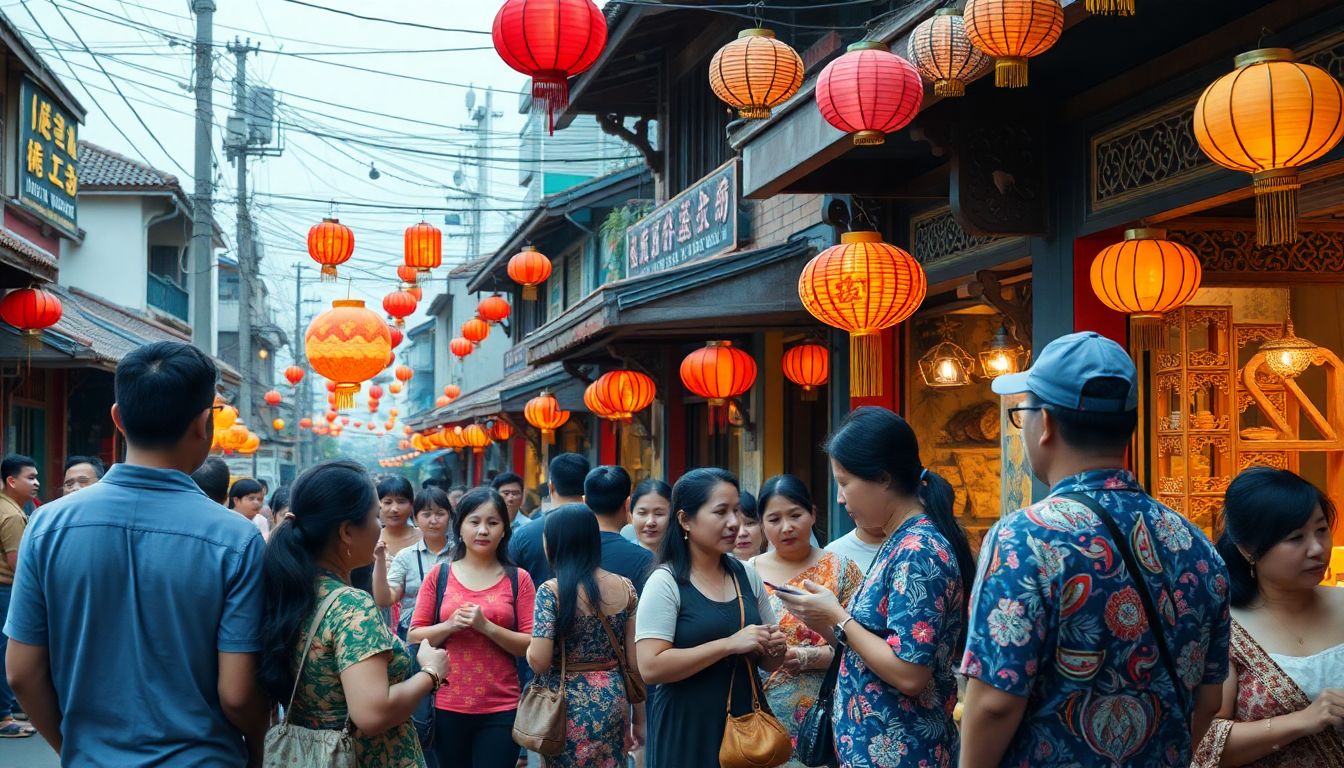
The Enduring Legacy: Exploring the Contributions of Chinese Filipinos to Philippine Culture and Heritage
The cultural landscape of the Philippines features a rich tapestry woven from various influences. Among these, the contributions of Chinese Filipinos stand out, shaping the nation’s identity. Their history, traditions, and innovations have left an indelible mark on the country. Discover how Chinese Filipinos have contributed to Filipino culture and heritage in various aspects.
The Historical Significance of Chinese-Filipino Relations
The relationship between Chinese communities and the Philippines stretches back over four centuries. Trade relations flourished during the Ming Dynasty. Many Chinese immigrants arrived seeking fortune and opportunity. They brought their customs, beliefs, and practices, enriching the local culture. These early interactions fostered a blend of traditions that still resonate today.
The Enduring Impact on Philippine Society
Chinese Filipinos have played vital roles in shaping various sectors of society. Their influence extends from politics to education, affecting countless lives. As a cohesive community, they have woven together the threads of heritage, creating a unique Filipino identity.
Unveiling the Rich Cultural Fusion
The interaction between Filipino and Chinese cultures has given rise to a beautiful amalgamation. This fusion is evident in language, cuisine, arts, and more, showcasing a harmonious coexistence that enriches Filipino identity.
Language: A Blend of Tongues
Influence of Hokkien, Cantonese, and Mandarin
Chinese languages have significantly influenced Filipino languages. Hokkien, Cantonese, and Mandarin infuse local dialects with unique expressions, expanding the vocabulary of Filipino speakers.
Loanwords and Linguistic Adaptations in Filipino Languages
Many Filipino words stem from Chinese origins. Common loanwords include:
- Sio (hot)
- Taho (soybean curd)
- Bihon (rice noodles)
These adaptations showcase how languages evolve through interaction.
The Evolution of Chinoy Language and Dialects
The emergence of the Chinoy language symbolizes the blend of Chinese and Filipino identities. It combines vocabulary and sentence structures, creating a vibrant linguistic culture.
Cuisine: A Delicious Fusion of Flavors
Iconic Chinese-Filipino Dishes and Their Origins
Chinese Filipinos have introduced beloved dishes that have become staples in Filipino households. Famous examples include:
- Lumpiang Shanghai: A spring roll filled with ground pork and vegetables.
- Pancit Canton: Stir-fried noodles, influenced by Chinese noodle dishes.
Regional Variations in Chinese-Filipino Cuisine
Different regions of the Philippines showcase unique takes on Chinese Filipino cuisine. For instance:
- Metro Manila: Known for its seafood dishes.
- Cebu: Famous for its sweet and sour specialties.
The Role of Chinese Ingredients in Filipino Cooking
Chinese ingredients such as soy sauce, tofu, and star anise have found their way into everyday Filipino cooking, enhancing flavors and expanding culinary techniques.
Arts and Traditions: A Cultural Symbiosis
Chinese-Filipino Influence on Architecture and Design
Chinese architectural styles can be seen in traditional Filipino homes and public spaces. Elements like intricate wood carvings and tiled roofs reveal this influence.
Traditional Chinese Arts and Crafts in the Philippines
From silk weaving to pottery, Chinese arts and crafts have enriched Filipino culture, merging techniques and aesthetics to create stunning artworks.
The Integration of Chinese Festivals and Practices
Festivals like the Chinese New Year have become widely celebrated in the Philippines. The lion dance and firecrackers are now synonymous with Filipino festivities, showcasing the integration of cultures.
Business and Entrepreneurship: Driving Economic Growth
Historical Role of Chinese Filipinos in Philippine Commerce
Chinese Filipinos have long been pivotal in the Philippine economy. Historically, they dominated trade and commerce, establishing pivotal markets and businesses throughout the archipelago.
Prominent Chinese-Filipino Business Families and Their Impact
Families like the Chin family, known for their successful ventures in various industries, highlight the lasting influence of Chinese Filipinos in business. Their entrepreneurship has led to the growth of the local economy.
Contributions to the Modern Philippine Economy
Today, Chinese Filipinos continue to drive economic growth, operating businesses from small shops to large corporations, fostering job creation throughout the nation.
Religion and Beliefs: A Harmonious Coexistence
The Integration of Chinese Religious Practices into Filipino Culture
Chinese religious practices, including ancestor worship and Feng Shui, have intertwined with local beliefs. This mixture showcases how cultural exchange shapes spiritual practices.
Syncretism and the Blending of Beliefs
The fusion of Buddhism, Taoism, and local traditions has created a unique spiritual landscape in the Philippines. This blend enriches religious life, offering diverse beliefs and practices.
Prominent Chinese Temples and Religious Sites in the Philippines
Temples such as the Seng Guan Temple and the Binondo Church stand as symbols of this rich cultural heritage. They serve as gathering spaces for the community, celebrating shared beliefs and traditions.
Conclusion: A Legacy of Enduring Influence
Key Takeaways: The Lasting Impact of Chinese Filipinos
Chinese Filipinos’ contributions span language, cuisine, arts, business, and religion. Their influence is a testament to the enduring power of cultural exchange.
Celebrating the Cultural Diversity of the Philippines
The vibrant mix of Filipino and Chinese cultures illustrates the beauty of diversity. It’s essential to recognize and celebrate these influences that shape the nation’s identity.
Encouraging Further Research and Understanding
Understanding the contributions of Chinese Filipinos deepens appreciation for the Philippines' rich cultural tapestry. Continued exploration of this history will foster deeper connections among communities.
Chinese Filipinos represent a vital part of the Philippines' heritage. Their ongoing influence invites exploration and celebration, enriching the nation’s identity for generations to come.